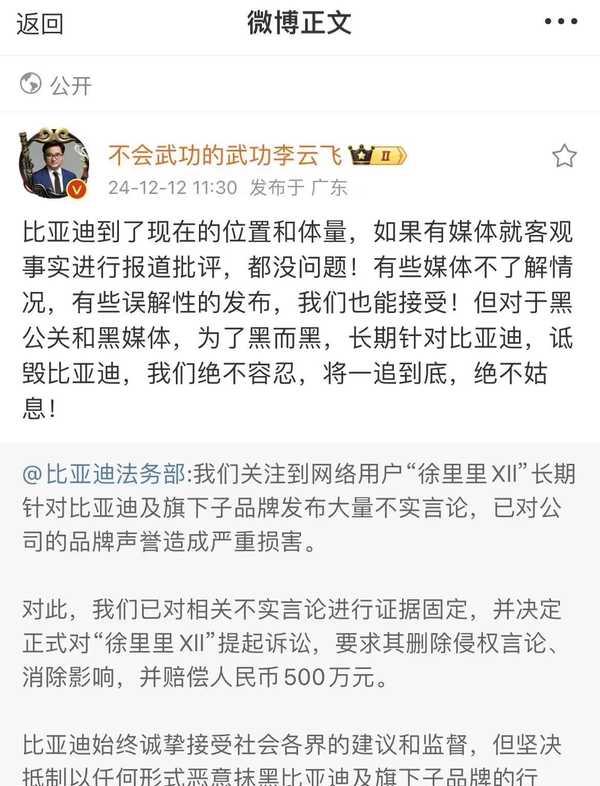Auto Giants vs. Social Media: The BYD-Vlogger Legal Battle
Chinese automaker BYD is suing automotive vlogger ‘XuLiLiXll’ for 5 million yuan in damages, claiming defamatory content. This case highlights growing tensions between car manufacturers and social media influencers in China.

In a significant development within China’s automotive media landscape, BYD’s legal department announced on December 12 that they are taking legal action against automotive content creator “XuLiLiXll” for alleged defamation, seeking 5 million yuan in damages.
This case reflects a broader trend of increasing conflicts between traditional automotive manufacturers and new media personalities in China. The automotive industry has witnessed a transformation in how information flows between companies and consumers, with social media influencers playing an increasingly prominent role.
The dispute centers around BYD’s claims that XuLiLiXll has consistently published unverified information about BYD and its sub-brands, causing significant damage to the company’s reputation. The automaker has gathered evidence of these allegedly false claims and demands both content removal and monetary compensation.
The situation has sparked intense debate within the automotive community. Many industry observers note that while social media creators serve an important function in providing independent vehicle reviews and analysis, there’s a growing concern about the line between legitimate criticism and potentially harmful misinformation.
Several factors have contributed to this tension. Traditional automotive companies are adapting to a new media environment where information spreads rapidly and influence is increasingly decentralized. Meanwhile, content creators face pressure to produce engaging content while maintaining journalistic integrity.
This legal action by BYD marks a significant escalation in how automotive manufacturers handle perceived reputation threats from social media personalities. It raises important questions about the balance between protecting corporate reputation and maintaining space for independent automotive commentary in China’s digital sphere.
The outcome of this case could set a precedent for future interactions between automotive manufacturers and social media influencers in China. It may influence how both sides approach content creation and brand criticism moving forward, potentially reshaping the relationship between traditional automotive industry players and new media voices.
Beyond the immediate legal implications, this case highlights the evolving nature of automotive journalism in China, where traditional boundaries between professional media, independent creators, and corporate communications continue to blur and shift in the digital age.